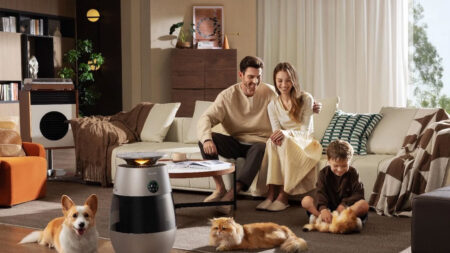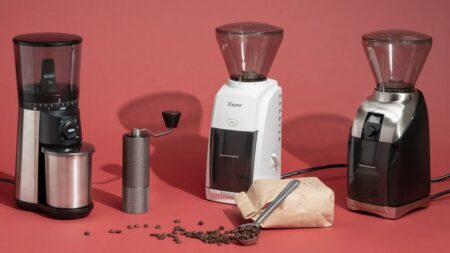Living alone comes with its own set of pros and cons. While I am alone, there is a whole lot of freedom for me to cherish, but there is also a hell lot of cleaning and mopping to be done. Thanks to modern-day vacuum cleaners have made these tedious tasks a lot easier by offering the service of mopping and cleaning in one. But this wasn’t the case before, especially not with the traditional vacuum cleaners that required manual intervention and took a lot of time, energy, and effort.
Stats show that about around 50 million vacuum cleaners are sold worldwide annually. Most of these are upright vacuums (traditional vacuum cleaners) which have dominated the market for a long period. However, the robot vacuum category is also growing steadily and is expected to be one of the most sought-after vacuum types by 2028 because of its high user satisfaction. We will try and decipher the key difference between these two vacuum cleaner types and give you a fair idea of what to choose.
What are Robot Vacuum Cleaners?
In the simplest of words, ‘Robot vacuums’ are automated devices, some utilizing AI technology, that enable you to clean your home effortlessly. These vacuum cleaners come equipped with motors, mapping technology, and sensors that make cleaning easier and a whole lot more enjoyable. On top of that, these vacuum cleaners also can autonomously clean various floor types and surfaces, effectively removing dirt and debris.

What are Upright Vacuums?
Upright vacuums are traditional vacuum cleaners that have been around for years, primarily used for removing stains from floors. However, they require manual operation, meaning the user must be present to clean. Despite technological advancements, their simple design and strong suction power continue to make them a popular choice for many households. And why not, to date, there has been no robotic vacuum cleaner that can climb stairs. We have heard of many prototypes in work, but no single company has made the plunge so far.

Advantages of Smart Vacuums over Regular Vacuums
While both traditional and robotic vacuums both excel in their respective areas, robotic vacuum cleaners offer a range of advantages over regular vacuum cleaners. This includes automated cleaning, scheduling options, and improved efficiency. These features provide unparalleled convenience and time-saving benefits that regular upright vacuums cannot match, making smart vacuums increasingly popular in many homes.
Operation
Since I own a robotic vacuum cleaner, I can attest that ‘robovacs’ operate autonomously, moving from their charging dock to cleaning the entire house before returning to recharge. In contrast, regular vacuums require manual movement and operation for cleaning various surfaces, making them less convenient.
Convenience
Speaking of convenience, robotic vacuum cleaners are designed for ease of use. Imagine you being on the sofa, watching your favorite TV series, while your vacuum is roving from one corner to another cleaning designated rooms. Sounds awesome right? However, this is not the case with an upright vacuum that demands manual effort, which can be time-consuming and labor-intensive.
Design
Robot vacuums are lightweight and come in dynamic shapes, such as round or square designs that fit easily into corners. Their compact size allows for easy storage, whereas regular vacuums tend to be bulkier and require more space. Additionally, traditional vacuum cleaners typically have larger dustbins, allowing them to collect more debris before needing to be emptied. However, some robot vacuums, address this issue by automatically emptying their bins.
Suction Power
While one may assume that a robotic vacuum cleaner will get a clean sweep in all aspects and parameters we would consider, but that is not the case here. One aspect, where an upright vacuum cleaner is miles ahead of a ‘robovac’ is the suction power they offer. An average upright vacuum is a lot more powerful in terms of suction than any robotic vacuum cleaner. The main reason why robot vacuum falls short in this aspect is due to the size of the motors. Compact in size, the robotic vacuum cleaners are incorporated with small motors, while traditional vacuum cleaners being bulkier in size can be equipped with large motors, hence offering better suction.
Special Features
As aforementioned, a robotic vacuum boasts an array of features including scheduling, mapping, cliff sensors, and wall detectors, enhancing their functionality. Mapping technology in particular allows these devices to navigate your home efficiently, identifying areas to clean. A regular vacuum cleaner is devoid of such features. After all, it has to be handled manually, so there is no point in incorporating mapping sensors inside it.

Pricing
Pricing has always been a bone of contention in the robotic cleaner market. Some manufacturers offer vacuum cleaners for $300 and some companies price their dust busters at $3000. It all depends on what version of vacuum cleaner you want to buy. Vacuum manufacturing companies offer vacuum cleaners ranging from basic models to premium versions with advanced functionalities like obstacle avoidance and mopping. To be honest, a regular vacuum cleaner is a lot cheaper. But I would still prefer a robotic vacuum cleaner, considering the convenience and time-saving capabilities that make it worth the investment.
Noise
Regular vacuums tend to operate at higher noise levels, averaging 70-80 dB, which can be disruptive in a living space. In contrast, robot vacuums are quieter, typically operating at around 55-65 dB, allowing you to go about your activities with minimal noise disturbance.
Conclusion
All these factors considered, a robotic vacuum cleaner appears to come out as a clear winner. It’s compact, AI-powered, lad with sensors, and produces minimal noise in comparison to an upright vacuum that is bulky, has to be manually operated, and generates a hell lot of noise. But if you are someone who is looking at suction ability or you are one of those who want to clean every single stair step, we would recommend you to opt for a regular vacuum cleaner. The choice is yours to make.
Follow Homecrux on Google News!




